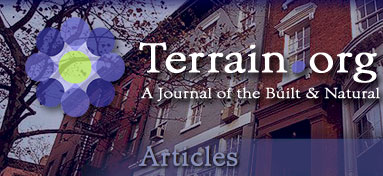
 |
|
|
This article arises from field experiences in built environments of New Mexico, where distinctive visual elements of Santa Fe style architecture inspired the author to record something of the ambience of the region in a series of drawings of representative structures. Five drawings of Santa Fe style buildings in New Mexico portray seminal archetypes as synthesized by artistic-architectural elites and adapted to design of residential, commercial, and community environments. The four drawings of Santa Fe style buildings in the Okanagan Valley of British Columbia portray the results of transfer of Santa Fe style architecture to a distant region through means other than permanent migration from the Southwest. The diffusion of Santa Fe style architecture to the Okanagan Valley has added to the mix of styles introduced by groups of migrants with differing cultural roots. The regional image of the Okanagan Valley within Western Canada and the United States Pacific Northwest is that of an urban corridor of spectacular scenic beauty which is becoming increasingly important as a destination for retirement, outdoor recreation, and tourism. The agricultural industry based on orcharding has responded to urban growth and tourism through niche marketing including viticulture. Scenic resources of agricultural, urban, and natural landscapes are a major component of the Valley's distinctive "place" identity. However, the character of a place is in large part the result of the buildings which make up much of the built environment. The character and identity of built environments in the Okanagan have been influenced by the introduction of Santa Fe style buildings, a "post-modern" architectural form which employs pastiche, in a playful combination of paradoxical elements (Goss, 1992). Santa Fe style buildings and places in the Okanagan Valley are in keeping with the qualities of post-modern townscapes: visual juxtaposition of components of built environments "in celebration of differences, of poly-culturalism, of variety, of style and stylishness" (Relph, 1987). The appearance of hand-crafted forms and textures, intricacy of detail, and use of space meets the approval of architects and planners who choose to follow guidelines established for urban design by Gordon Cullen and Kevin Lynch. This visual exploration of the spatial diffusion of Santa Fe style architecture to the Okanagan Valley is partially motivated by the hope that it may assist in making sense of how people use ordinary landscapes to establish their identity, express social functions, and derive cultural meaning (Lewis, 1979; Groth, 1997). Cllick on the icons or highlighted text below to view the pen-and-ink drawings and narrative summaries in pop-up windows. You may follow the links in order, or choose your own path. Santa Fe Style in the Okanagan Valley, British Columbia Acknowledgment I thank my traveling partner and wife, Judy, for stimulating refinement of ideas contained in this paper.
|
|
||||||||||||||||||||||||||||||||||||||||||||||||||||||||||||||